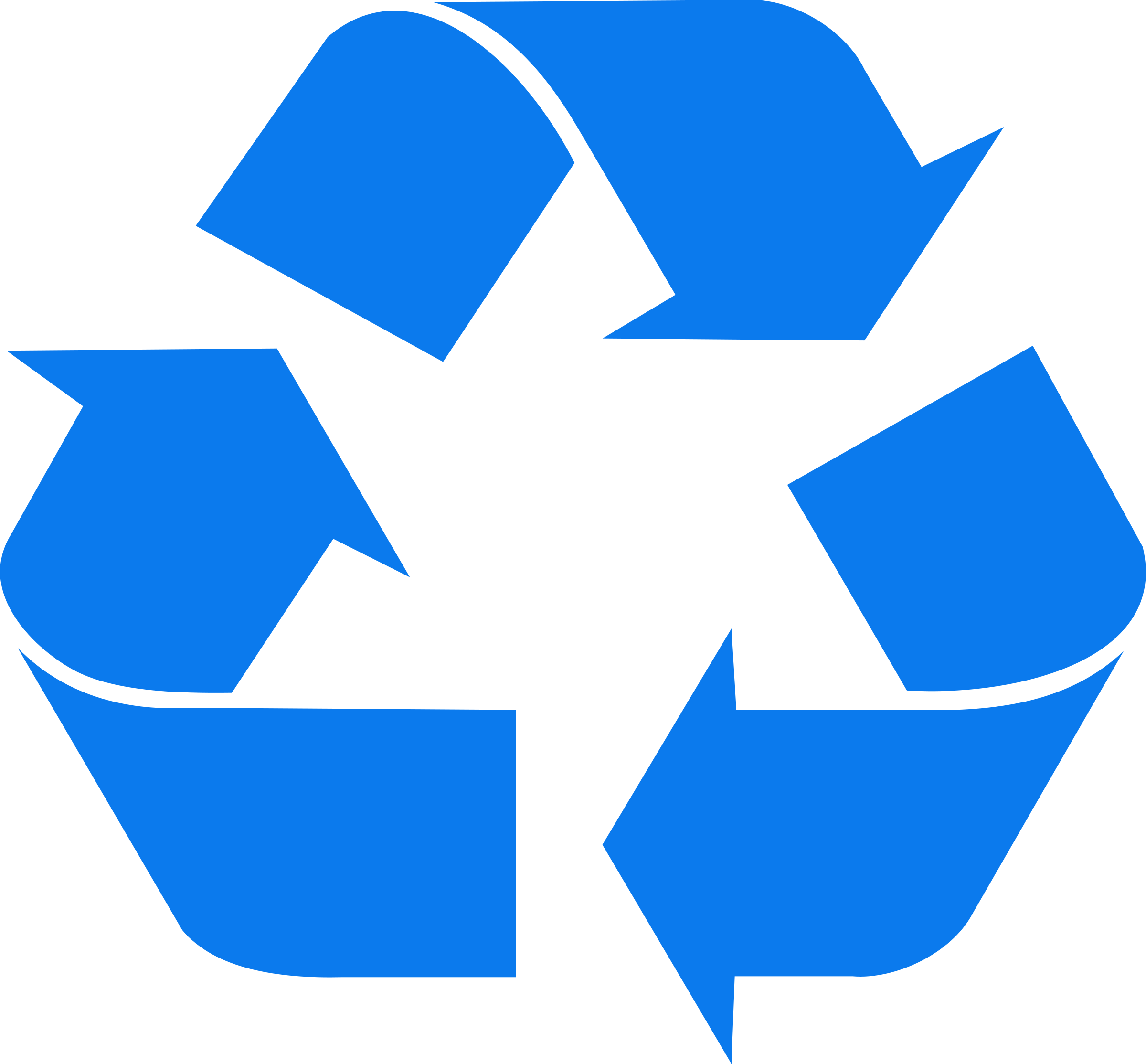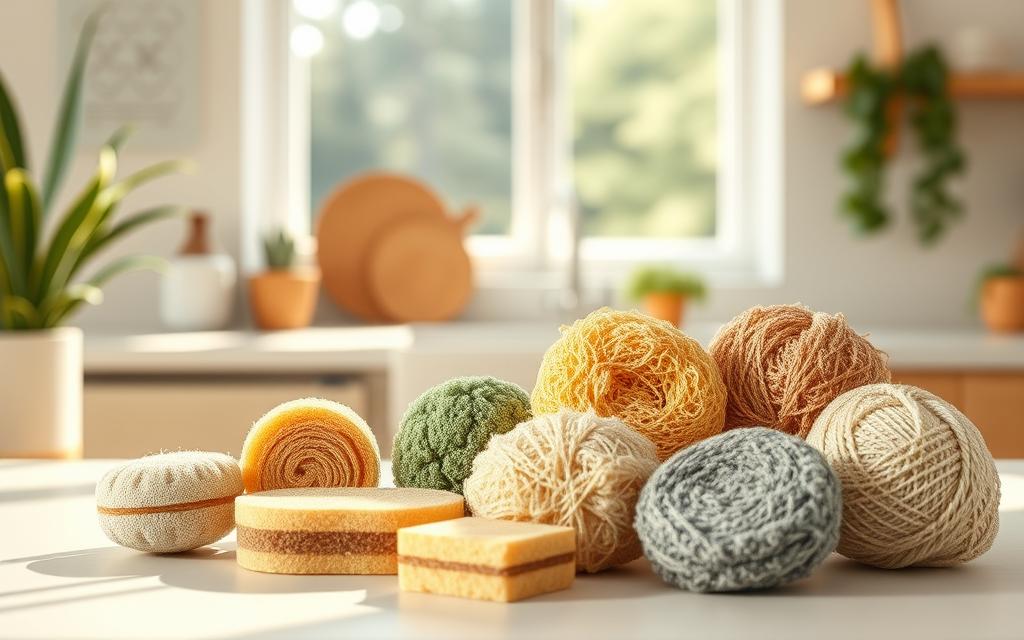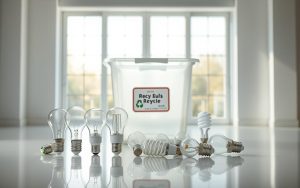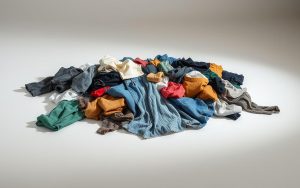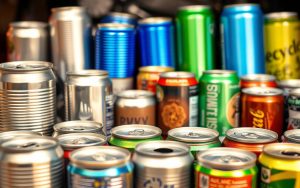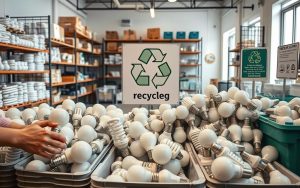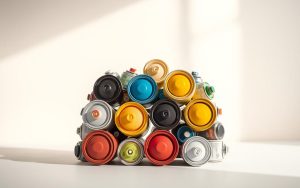Picture this: you’re scrubbing dishes after dinner, relying on a trusty kitchen sponge to tackle the mess. It’s a routine task for millions of households. But have you ever wondered what happens to that sponge once it’s worn out?
In the U.S., over 127 million homes discard sponges weekly, contributing to a growing plastic waste problem. Most conventional options end up in landfills, taking years to decompose. This raises the question: are sponges recyclable?
This article dives into the challenges of recycling sponges and explores sustainable alternatives. From innovative programs like TerraCycle’s Skura initiative to eco-friendly swaps, we’ll guide you toward reducing your environmental footprint. Plus, affiliate links and our Recycling Directory help fund these efforts.
Join us as we uncover practical solutions to make your kitchen cleaning routine greener and more sustainable.
The Environmental Impact of Kitchen Sponges
Every day, millions of households rely on kitchen sponges for cleaning. While convenient, these tools have a hidden cost. Most are made from petroleum-based materials like polyester and polyurethane, which harm the planet throughout their lifecycle.
Why Sponges Are Harmful to the Planet
Manufacturing plastic sponges generates significant greenhouse gas emissions. In 2019 alone, this process produced over 850 million metric tons of emissions. These materials are derived from fossil fuels, contributing to climate change.
Additionally, the average household uses about 52 sponges yearly. Nationally, this adds up to 6.6 billion sponges discarded annually. Most end up in landfills, where they take over 200 years to decompose.
The Problem of Microplastic Pollution
During dishwashing, sponges shed tiny plastic fibers. A single sponge can release up to 1 million microplastic particles weekly. These particles bypass water treatment plants, contaminating waterways and oceans.
Microplastics from sponges contribute to the growing issue of ocean pollution. They join the Great Pacific Garbage Patch, harming marine life and ecosystems.
How Sponges Contribute to Landfill Waste
Sponges made from synthetic materials are not biodegradable. When discarded, they pile up in landfills, taking centuries to break down. For every 1 million households, 52 million sponges are added to landfills each year.
This waste problem is compounded by the lack of recycling options for most sponges. The result is a growing environmental burden that demands attention.
| Issue | Impact |
|---|---|
| Greenhouse Gas Emissions | 850M+ metric tons in 2019 |
| Annual Sponge Usage | 6.6B+ sponges discarded nationally |
| Microplastic Shedding | Up to 1M fibers/week per sponge |
| Decomposition Time | 200+ years in landfills |
Are Sponges Recyclable? The Truth
Many people assume their cleaning tools can be recycled, but the reality is more complex. Most kitchen sponges are designed for single-use and disposal, creating a significant environmental burden. Let’s explore why recycling these everyday items is so challenging.
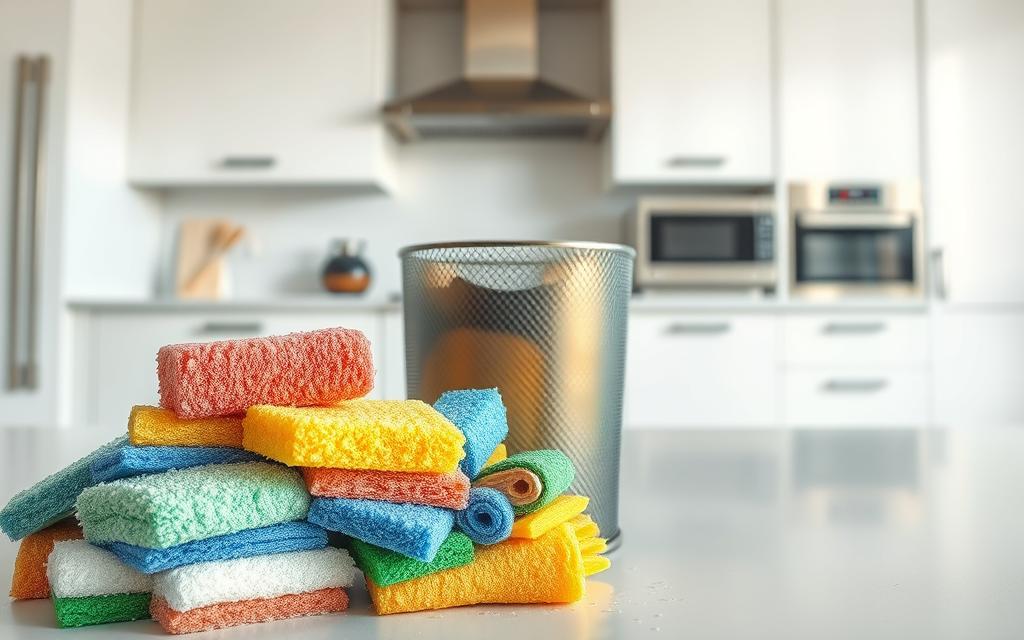
Why Most Sponges Can’t Be Recycled
Conventional cleaning tools are often made from mixed materials like polyester and polyurethane. These components are difficult to separate, making mechanical recycling nearly impossible. Additionally, only 0.2% of U.S. recycling centers accept polyurethane foam, a common material in sponges.
Even if facilities could process these materials, contamination from food residue and cleaning chemicals complicates the process. This limits the options for recycling and increases the likelihood of ending up in landfills.
Recycling Options Through TerraCycle
For those determined to recycle, TerraCycle offers a solution. Their Skura program allows consumers to send used sponges for processing. However, this requires purchasing a $137 Zero Waste Box, which may not be cost-effective for everyone.
While this initiative provides a pathway for recycling, it’s not widely accessible. The high cost and limited awareness of such programs remain significant barriers.
The Challenges of Recycling Sponges
Chemical recycling, another potential solution, faces hurdles. Contaminated sponges are difficult to process, and FDA regulations further complicate the production of recycled materials. A 2022 Seattle municipal pilot program aimed at recycling sponges failed due to these challenges.
Without widespread infrastructure or affordable options, most cleaning tools continue to contribute to landfill waste. This highlights the need for sustainable alternatives and systemic change.
Eco-Friendly Alternatives to Plastic Sponges
Switching to eco-friendly cleaning tools can transform your kitchen routine. These options reduce waste, minimize microplastic pollution, and often perform better than traditional plastic sponges. Let’s explore some of the best sustainable choices available today.
Fabric Dishcloths: A Sustainable Choice
Fabric dishcloths made from cotton or bamboo are a durable and reusable option. Full Circle’s organic cotton dishcloths, priced at $9.99 for a 3-pack, are a popular choice. They’re machine washable and can replace dozens of disposable sponges.
When comparing performance, cotton outperforms bamboo and linen in durability. These dishcloths are ideal for everyday cleaning tasks, from wiping counters to drying dishes.
Cellulose Sponges: Biodegradable and Effective
For those who prefer a sponge-like texture, cellulose sponges are an excellent option. Made from plant-based materials, they decompose in just 45 days. Brands like rE offer 100% cellulose sponges that meet USDA-certified biobased product standards.
These sponges are highly effective at removing baked-on grease and are compostable, making them a planet-friendly choice.
Loofah Sponges: Natural and Reusable
Loofah sponges, derived from the plant of the same name, are a natural and reusable alternative. They’re perfect for scrubbing pots and pans without scratching surfaces. With a growth cycle of 150-180 days, loofahs are a sustainable option for eco-conscious households.
DIY enthusiasts can even grow their own loofahs, adding a personal touch to their cleaning routine.
Coconut and Walnut Scrubbers: Plant-Based Cleaning
For tough cleaning jobs, coconut and walnut scrubbers are a game-changer. Grove Collaborative’s compostable coconut scrubbers are ASTM D6400 certified, ensuring they break down safely. These plant-based tools are ideal for tackling stubborn grease and grime.
While eco-friendly sponges cost between $2.50 and $4.00 each, their long-term benefits outweigh the slightly higher price compared to conventional options.
How to Choose the Right Eco-Friendly Sponge
Choosing the right eco-friendly sponge can feel overwhelming with so many options available. From certifications to materials, there’s a lot to consider. Here’s a guide to help you make informed decisions and avoid common pitfalls.

What to Look for in a Sustainable Sponge
Start by checking for certifications like Global Organic Textile Standard (GOTS) or USDA Organic. These ensure the product meets strict environmental standards. Materials matter too—opt for cotton or cellulose, which are biodegradable and compostable.
Look for products labeled “Cradle to Cradle” or “FSC Certified.” These indicate the item is designed with sustainability in mind. Avoid sponges made from plastic, as they contribute to landfill waste and microplastic pollution.
Avoiding Greenwashing in Sponge Products
Be cautious of vague terms like “Eco-safe” or “Natural-inspired.” These phrases often lack substantiation. Refer to the FTC Green Guides to understand what “biodegradable” truly means. For example, SC Johnson faced a lawsuit in 2023 for misleading eco-friendly claims.
Always verify third-party certifications. If a product claims to be plant-based, ensure it’s backed by credible organizations. Transparency is key to avoiding greenwashing.
Tips for Transitioning to Eco-Friendly Options
Start small by replacing one sponge at a time. A 3-phase replacement strategy can ease the transition. For example, begin with dishcloths, then move to cellulose sponges, and finally try loofahs.
Care instructions vary—some products can be boiled, while others require vinegar soaking or machine washing. Compare these methods to find what works best for your routine. Budget-friendly swaps, like repurposing old cotton t-shirts, can also help reduce waste.
When shopping, check retailer scorecards. Whole Foods, Target, and Thrive Market offer diverse selections of eco-friendly sponges. Prioritize products that align with your values and budget.
Conclusion
With billions of sponges discarded annually, the need for change is urgent. In the U.S., 6.6 billion cleaning tools end up in landfills each year, affecting 127 million households. While programs like TerraCycle offer recycling options, they remain limited and costly, highlighting the need for systemic solutions.
Take the first step toward sustainability with a 30-day eco-sponge challenge. Replace conventional tools with eco-friendly alternatives and witness the difference. Emerging innovations, such as mycelium-based sponges, promise even greener options in the near future.
Switching to sustainable cleaning tools not only benefits the planet but also your wallet. Households can save up to $23 annually by making the switch. For more insights, explore the EPA’s Sustainable Management of Materials resources.
Small changes in your kitchen routine can lead to significant environmental impact. Start today and contribute to a cleaner, healthier planet.
